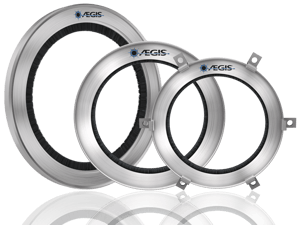 Mining has been vital to civilization since at least the Bronze Age. In today’s electrified world, metals and minerals are more important than ever. The need for mined products is ubiquitous from copper for wiring to phosphates for fertilizer. And valuable – in 2021, the value of the largest 40 mining companies was $925 billion.
Mining has been vital to civilization since at least the Bronze Age. In today’s electrified world, metals and minerals are more important than ever. The need for mined products is ubiquitous from copper for wiring to phosphates for fertilizer. And valuable – in 2021, the value of the largest 40 mining companies was $925 billion.
How Motors are Used in the Mining Industry
Like every other modern industry, mining operations require electric motors. These motors are often controlled by variable frequency drives for precise control and energy savings. Some specific motor applications and how they benefit from VFD control are:
- Conveyor systems transport ores and other materials. VFDs allow operators to maintain a steady conveyor speed even as the load on the belt changes.
- Crushers and mills crush and grind ore, minerals, and rock. VFDs are used to control the torque of these machines, so the torque is always appropriate to the size of the chunks of material being processed.
- Drilling equipment is used for exploration and tunneling. Variable speed control of drilling motors allows for matching the torque and speed to the properties of the material being drilled through. This, in turn, yields optimal drilling rates and reduced wear on bits.
- Pumps are needed for such processes as dewatering and slurry handling. VFD control of pump motors saves energy by ensuring that the motors run only as fast as necessary for the current demand. Running motors at reduced speed saves significant amounts of energy.
- Fans and ventilation systems are needed to maintain safe and comfortable working conditions in underground mines. As with pumps, VFD control allows motors to drive this equipment only as fast as the current conditions demand. Again, the result is significant energy savings.
- Compressors supply compressed air, vital to mining processes like pneumatic drilling and powering various tools. VFDs regulate the speed of air compressors, ensuring that the compressed air supply matches demand and conserves energy.
All of these advantages notwithstanding, variable frequency drives have disadvantages, too. The pulsed nature of their output power is hard on motor stator windings and can burn them out if the insulation is inadequate. This problem is exacerbated by long cable lengths, which are very common in mining.
Along with stator winding damage, drives can also cause electrical bearing damage. This is also because VFD output voltage comes in pulses, instead of smooth waves like mains power. Mains power is balanced: The average voltage of the three phases, or common mode voltage (CMV), is always zero. The CMV of VFD output is never zero.
Nonzero CMV causes electrical bearing damage by three mechanisms:
- Capacitive shaft voltage discharge: The CMV charges the rotor like a capacitor. This charge on the rotor, called shaft voltage, can discharge by arcing through the bearings, roughening the smooth surfaces, and degrading the grease. This damage is cumulative and is a problem for all motors on drives.
- Inductive high-frequency circulating current: When the CMV changes, current is driven into the motor frame. This current’s motion through the frame induces a current that circulates between the frame and rotor through both bearings. This high-frequency circulating current is problematic in larger motors, over 100 hp (75 kW).
- Rotor ground current: The frame current we mentioned runs back to the VFD through cabling or ground. If there is no low-impedance path to the drive, it may flow through motor and equipment bearings on its way to ground. This rotor ground current happens whenever the motor is not well bonded to the drive, damaging both motor and equipment bearings.
Best Practices for Motor Protection
So-called inverter-duty or inverter-ready motors typically have voltage spike-resistant winding insulation to protect against VFD-sourced winding damage. But most such motors do not include full protection against electrical bearing damage.
Bearing damage from shaft voltage discharge can be guarded against with reliable shaft grounding, like an AEGIS® Shaft Grounding Ring. All motors on drives should be equipped with shaft grounding.
High-frequency circulating current in motors over 100 hp/75 kW can be interrupted with an insulated or hybrid ceramic bearing. This bearing is typically at the non-drive end of the motor. Whichever bearing is insulated should be at the opposite end of the motor from the shaft grounding ring.
Rotor ground current can be minimized by proper grounding and bonding. One inexpensive form of protection is using a grounding strap, like the AEGIS® HFGS, to bond the motor and equipment frames. This way, frame current would flow through the strap instead of taking a path through the bearings.
Many major motor brands – including Baldor (ABB), US Motors (Nidec), and WEG Electric – have inverter duty lines that come with AEGIS rings standard (and bearing insulation in higher power models). AEGIS rings and insulated bearings are also available as mods for most motors.
AEGIS rings come with a 2-Year Extended Warranty against bearing fluting damage. No other form of protection against VFD-caused bearing damage offers a warranty like this..

To learn more about AEGIS shaft grounding and best practices for electrical bearing protection, sign up for a training. We offer monthly live training webinars, and - pandemic restrictions permitting - we can also visit your facility to review your exact application.


